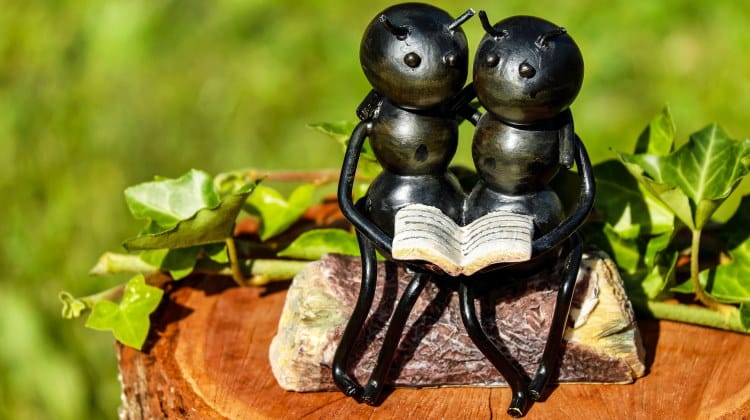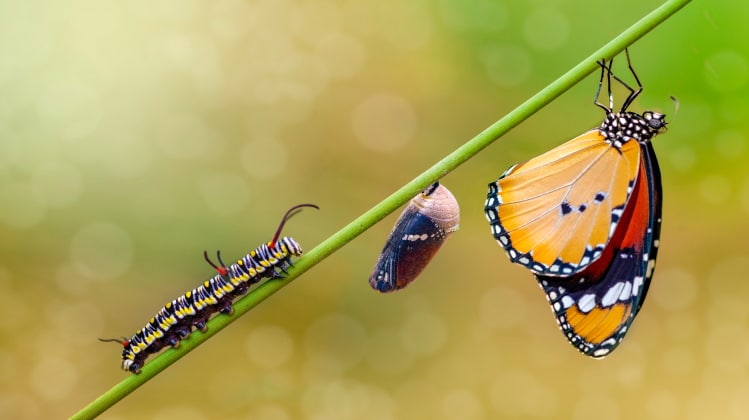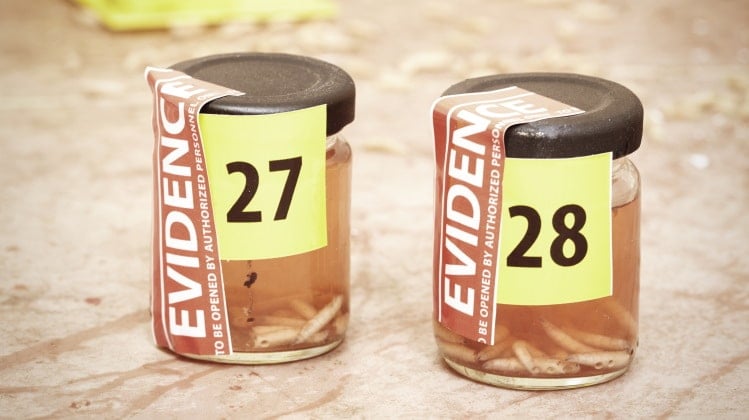Rhinoceros Beetles As Pets: How To Breed & Care For Megasoma Acteon
The genus Megasoma has a large geographic distribution; Megasoma actaeon comes from Guyana. Much like other members of the tribe Dynastini, Megasoma exhibits a high degree of sexual dimorphism: the males have very long tarsi and horns (in the present case, we find two thoracic horns and one cephalic horn).
The female is devoid of horns. Megasoma is dark brown and measures 10 cm long for males and 7 cm for females. In its natural environment, Megasoma flies between 20.00 to 22.00 hours and the proportion of males and females is relatively even.
I am writing my observations on the breeding of Rhinoceros Beetles because it was very difficult to me to find information about the development and life cycle of this fabulous insect.
The only article I found was by H. F. Howden published in the book: Costa Rican Natural History, however, this article referred in general to M. elephas not M. actaeon.
The following notes are the results of six years’ worth of observations.
Housing Pet Rhinoceros Beetles
The best conditions found for keeping an adult Rhinoceros Beetle pet was in a vivarium composed of two parts (or halves) of approximately 40 x 33 x 25 cm each. These two parts are placed top to bottom forming two parts: the lower half should preferably be opaque to dark; it should be filled with a mixture of 1 part of crushed wood to 2 parts of compost.
This mix will allow some pieces of wood (oak for example). The upper half should be transparent and should contain pieces of branch and bark placed into it; and should be lit from the top, and outside the tank
The vivarium should be maintained at 25C -+ 2C during the day and 22C -+ 1-2C during the night. Lighting (neon full spectrum light is good) should be used to give a photoperiod of 12 hours day and 12 hours night to the vivarium. Humidity should be maintained at about 85-90% by keeping the compost moist.
Some remarks on Rhinoceros Beetle pets in captivity:
The insects are principally crepuscular, so activity will reach its highest point in the evenings when they will make flight trials and be most vigorous in their attempts to escape. These insects are very strong and ventilation screens can’t be used (the claws of the insects slash the screen); aeration must be supplied by means of holes in the sides of vivarium.
Like a turtle, when Megasoma finds itself on its back on a smooth surface, or on the surface of the compost without any branches nearby, it is incapable righting itself – and if left in this position for too long it can die.
Feeding
Megasoma can be quite adequately fed on bananas. When feeding, they clasp the fruit and gorge themselves on it; 5 cm of bananas may be eaten per adult per day.
Mating
Coupling of adults: the coupling of adults is not visible, or it’s very rare to see it. The only time we can assist it is during the feeding period. In normal conditions of maintenance, the copulation occurs without problem.
But, if the number of Rhinoceros Beetle pets is very limited, a special technique to be sure of having an impregnated female is as follows:
A female is put on piece of branch and held there by hand; when the female is immobilised (and it’s very difficult because the claws and the spines on the legs), the male is allowed to approach… And the nature will do the rest!
This technique worked well in 1990 when one female was impregnated after 20 to 30 minutes of harassing and qualified violence! This coupling lasted 38 minutes after the adults were immobilized and the manual grasp was relaxed. Adults live for 100 to 151 days.
Egg Laying
The depth of the compost available for the female to lay in is very important, as is the texture. The compost should be compressed (to imitate the texture of a rotten tree trunk) and it should have in it some pieces of wood. A minimum of 25 cm of this imitation rotten tree trunk should be available (in the present case, this depth was imposed by limits of a technical nature). A depth of 50 cm would be better for this insect.
Some observations on Lucanus cervus have led to me to believe there is a relationship between an insect and the depth of laying. The optimal depth of the laying compost is equal to eight times the insect’s height; so for a female Lucanus cervus of 4 cm, it is necessary to have 32 cm of available compost.
I have applied this relationship to other species of Dynastidae, such as Golopha porteri and Choelhorrinna polyphemus, and it resulted in the maximum number of eggs being laid every time.
The eggs (the size of the egg is 8-10 mm x 7,5 mm in diameter) are laid similarly to those of Cetonidae. They are deposited into a suitable log or a lump of compost, generally in the most compressed parts of compost. The distribution of eggs within the compost is random.
The egg’s size increases, presumably by absorption of water after laying. Length increased from 5 mm to 7 mm after three weeks; in the same time, its diameter increased from 3.5 mm to 5.5 mm. The eggs have then appeared to reach their final size and remain stable until hatching.
The eggs should be put into individual boxes with a new compost. This should be composed of two parts of sawdust and one part of a leaf compost. Raising them in individual boxes is preferred to group boxes as it reduces the potential infestations by parasites (i.e., Acari or Mites). Eggs should be kept like this until they hatch; incubation time is 25 to 36 days.
Development
The Rhinoceros Beetle larva: on hatching, the larva measures about 8 mm in length and 3-4 mm in diameter. The cephalic capsules measure 4.4 mm in length and 4 mm in width; this small L1 weighs 0.17g at this moment (it will weigh 90g at the end of the L3 phase).
Two possibilities are available for breeding this larva, they can either be raised individually, i.e. each larva is placed in an individual box. The size of boxes will have to be enlarged as the larva grows; you will need a volume of 5 or 6 litres minimum per larva by the L3 (last phase of the larva development).
Or they can be reared in groups i.e. up to about 10 of the larvae are arranged in a group box. The box’s size must be proportional to the number of individuals and the developmental phase. For 10 larvae in the L1 stage, a box of 2 liters is sufficient; during the L2 stage, you will need 6 litres, increasing to 10 litres towards the end of this phase. For the L3 phase, it is better to start the larva in boxes of 30 litres minimum (50 litres is best).
This volume permits the larva to develop well and decrease the amount of handling. Cannibalism is generally not a problem in group rearing, about 10%.
Cephalic Capsule Sizes* (length x width**) By Larval Phase:
- L1:
- L2: 10 x 9 mm
- L3: 15.5 x 16.1 mm
* On average.
** The width is the most important measure for phases identification.
The developmental time for larvae is 943 days on average (893 days minimum and 993 days maximum).
The larva now goes into a prepupal stage and then pupates. During the prepupal phase it is quite immobile and gives the impression of being shriveled up. Generally it is on its back position during this time. After about 24 days the insect pupates. During this phase the insect is entirely immobile; pupation normally take about 38 days.
These two last development phases generally occur inside a log. The larva make a nest of the compost about the size of one fist. Though sometimes larva can successfully pupate without this added protection, they are obviously more sensitive to disturbance. It is important that the compost remains humid during this time.
The total time taken for development is on average 1,035 days or 2.83 years for both sexes
The adult females of Megasoma actaeon obtained from captive breeding are almost equal in size to wild specimens, but the males are smaller (2 cm less). There does not appear to be a continual reduction in size with successive generations.
Conclusion
Megasoma actaeon is a large Rhinoceros Beetle but breeding it is not difficult. The two main problems are setting up of the initial system so that it adequately satisfies the insect’s demands; and the duration of the development cycle.
3 years is a longish time so it is best not to start unless you are sure you want to keep up the maintenance for this length of time. However it is a great pleasure to successfully rear this fabulous insect.
An important point to consider is that a perfect knowledge of the development cycle of this and other similar insects will facilitate their captive breeding – and thus take pressure of the wild stocks. Ultimately, this is just one approach to the breeding of this beetle and the successful care of a Rhinoceros Beetle pet. Though I think that it is good model for the breeding of the Dynastide as a whole, this will need to be confirmed by the work of other entomologists on other species. Good luck and enjoy your work.
Last Updated: 21/5/2020
The information on this page was supplied by Franck Radnai ([email protected]). He is the guy to talk to if you have any questions about the information here. I am only responsible for adapting his info for the web.






Any suggestions on successfully removing tiny white mites from an adult male? Infestation seems to have popped up overnight and he has many on his head. Tried wiping them away with a q-tip but they seemed to be glued in place. They are extremely small and barely visible but I don’t want them to adversely affect the beetle or transfer to me.
Thank you for the excellent information.
I have just discovered i have a large beetle pupae (Australia here, i think its a Rhinoceros Beetle) in my parlour palm potted plant & hope its happy there to continue its life cycle.
I won’t keep it as a pet but its nice to know its safe from predators & hopefully happy where he/she is.
I’ve added some rotting wood from the garden & ill keep an eye on it.
Thanks for your article.